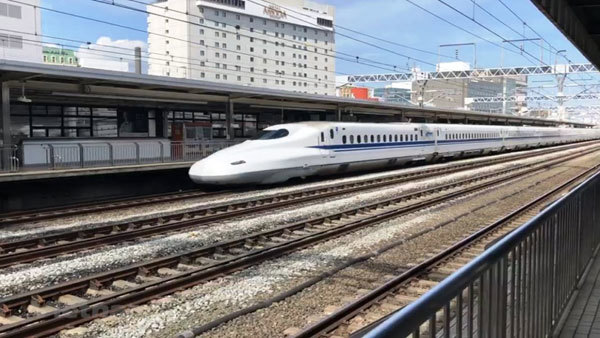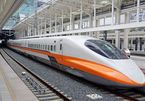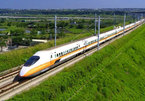 |
|
A high-speed train in Japan. The Ministry of Transport has proposed the construction of two high-speed railway projects.
|
The ministry recently submitted a railway network planning scheme for the 2021-2030 period, with a vision toward 2050, including the construction of the two high-speed rail routes, to the Government for approval, said the ministry’s representative on October 13, reported VnExpress.
Besides this, the ministry suggested the development of eight new rail routes by 2030, including the Yen Vien-Pha Lai-Ha Long-Cai Lan route, a ring road in the east of Hanoi, the Hanoi-Haiphong route and the HCMC-Can Tho route, among others.
These rail roads would link with the country’s international seaports in Haiphong City and Ba Ria-Vung Tau Province, connect HCMC with the Mekong Delta and link the country with the neighboring countries such as China, Laos and Cambodia.
By 2050, the local railway sector is set to complete the construction of the North-South high-speed rail route and continue investing in new rail routes in the two major hubs of Hanoi and HCMC and those linking seaports, industrial parks, economic zones, the Central Highlands region and the trans-Asia railway. It will also upgrade the existing rail routes.
The capital demand to develop railway infrastructure in the country by 2030 would reach an estimated VND240 trillion, funded by the State budget and other legal sources.
Earlier, many transport experts had proposed the construction of the North-South railway with a speed of 160-200 kilometers per hour to transport passengers and cargo, instead of building high-speed rail routes at 350 kilometers per hour to carry only passengers.
Planning consultants said that the attractiveness of the railway depends on its speed. The local railway sector would obtain 93% of market share if it operates high-speed trains running at 350 kilometers per hour on the Hanoi-Vinh route, while the market share would be 85% for trains running at 200 kilometers per hour. On the Hanoi-Danang route, the figures would be 75% and 35%, respectively.
As for the Hanoi-HCMC route, the market share of high-speed trains running at 350 kilometers per hour would reach 15%, while that of trains traveling at 200 kilometers per hour would be a mere 0.3%.
Further, it takes passengers one hour to travel from Hanoi to Vinh City on high-speed trains running at 350 kilometers per hour, while they need three hours to travel by air on the same route. For the Hanoi-HCMC route, traveling on high-speed trains will take 5.5 hours, which is around one hour longer than traveling by air.
Source: Saigon Times

High-speed railways and Vietnam's options
High-speed railways in countries around the world currently run at a speed of 200-250km/hour. Vietnam plans to have a high-speed railway system in the next 10 years, but so far it has not yet been able to choose technology and train speed.

Vietnam speeds up high-speed railway projects
The two high-speed trains are expected to be put into operation by 2030.